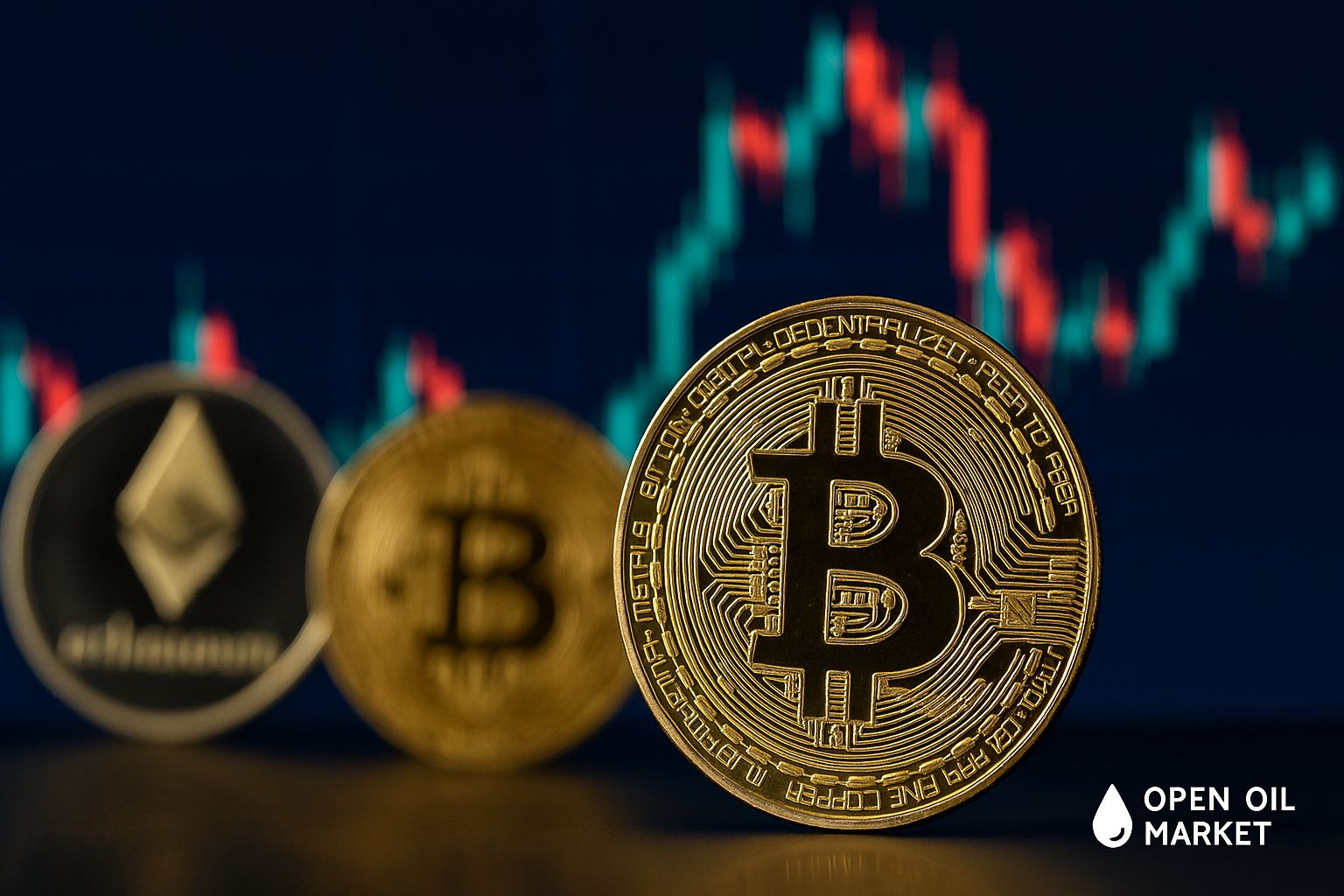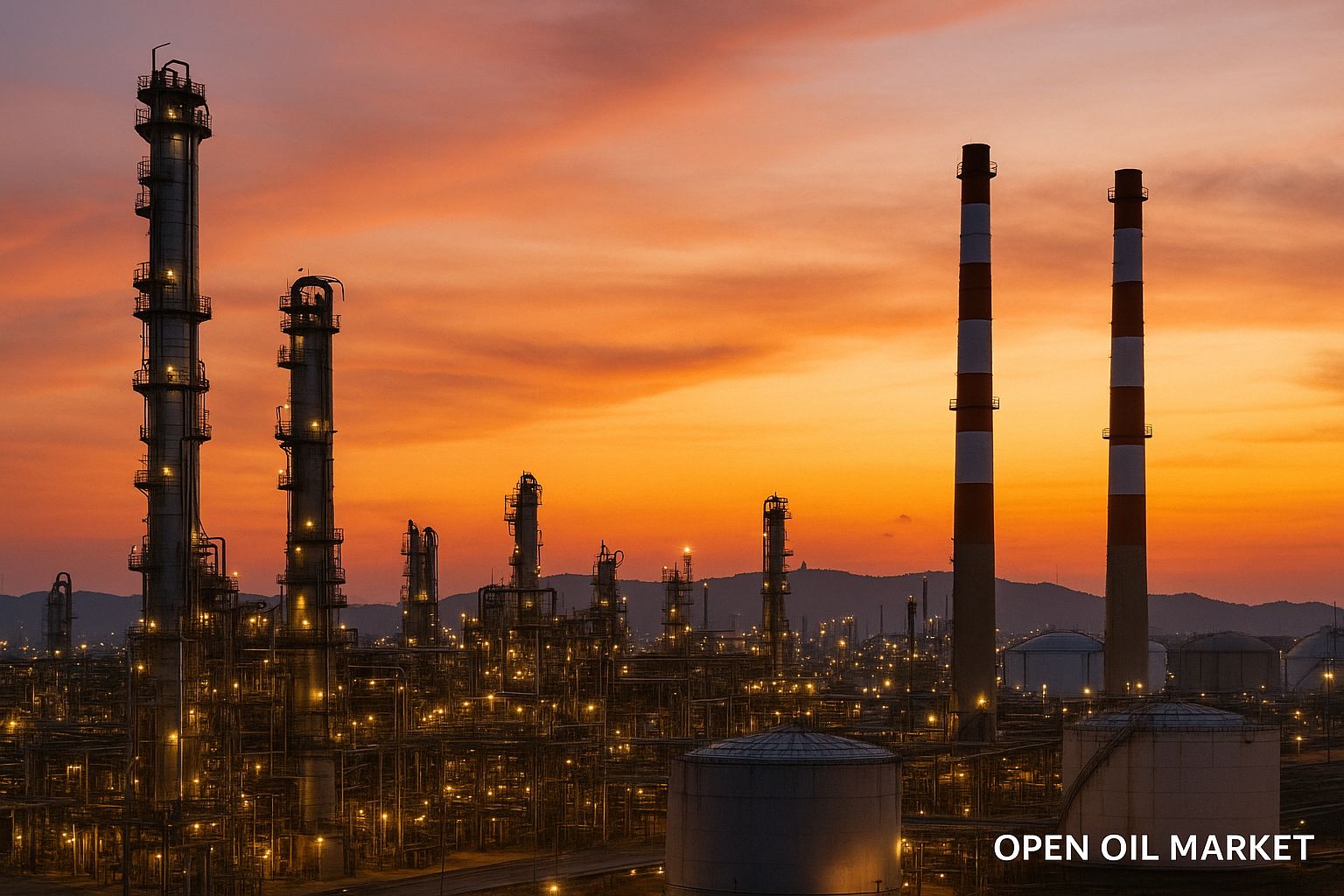
Current News in the Oil, Gas, and Energy Sector as of November 27, 2025: Geopolitical Initiatives and Sanction Pressures, Oil Price Dynamics Amidst Oversupply, The Situation in the European Gas Market This Winter, Renewable Energy Development, Coal Sector Trends, and Stabilization of the Domestic Fuel Market.
Current events in the global fuel and energy complex as of November 27, 2025, are unfolding amidst contradictory trends. Unexpected diplomatic moves instill cautious optimism regarding the easing of geopolitical tensions: discussed peace initiatives aimed at conflict resolution provide hope for a gradual alleviation of sanction pressures. This has already reflected in a partial reduction of the "risk premium" in commodity markets. At the same time, the West continues its strict sanctions policy, maintaining a challenging environment for traditional energy resource export flows.
Global oil prices remain relatively low due to oversupply and weakened demand. Brent quotations hover around $61–62 per barrel (WTI around $57), which is close to the lows of the past two years and significantly below last year's levels. The European gas market enters winter in a relatively balanced state: underground gas storage facilities in EU countries are filled to approximately 75–78% of total capacity, providing a solid reserve, while exchange prices remain relatively low. However, weather uncertainty persists and could lead to increased volatility with the onset of cold temperatures.
Simultaneously, the global energy transition is gaining momentum—many countries are reporting record generation of electricity from renewable sources; however, reliable energy systems still require traditional resources. Investors and companies are pouring unprecedented funds into "green" energy, even though oil, gas, and coal remain the backbone of global energy supply. In Russia, following a recent autumn fuel crisis, government emergency measures have stabilized the domestic gasoline and diesel market ahead of the winter season. Below is a detailed overview of key news and trends in the oil, gas, energy, and commodity segments of the fuel and energy complex as of the current date.
Oil Market: Peace Signals and Oversupply Pressure Prices
The global oil market continues to demonstrate weak price levels influenced by fundamental factors. A barrel of Brent trades at around $61–62, WTI at about $57, which is roughly 15% lower than a year ago. Price dynamics are shaped by several key drivers:
- OPEC+ Production Increases. The oil alliance OPEC+ continues to methodically increase supply. In December 2025, the total production quota for participants in the agreement will increase by another approximately 137,000 barrels per day. Previously, monthly increases had comprised 0.5–0.6 million barrels/day since summer, which has already brought global oil and petroleum product stocks back to levels close to pre-pandemic figures. While further quota increases are postponed at least until spring 2026 due to concerns over market oversupply, the current rise in supply is already exerting downward pressure on prices.
- Demand Slowdown. The growth rate of global oil consumption has significantly decelerated. According to estimates from the International Energy Agency, the increase in demand in 2025 will be less than 0.8 million barrels/day (compared to ~2.5 million in 2023). Even OPEC's own forecast has become more restrained—around +1.2–1.3 million barrels per day. The slowing global economy, the effects of high prices from previous years, and energy conservation measures are limiting consumption. Additionally, slowing industrial growth in China is dampening the appetite of the world's second-largest oil consumer.
- Geopolitical Signals. Reports of a potential peace plan regarding Ukraine from the U.S. side have reduced the level of geopolitical uncertainty in the market, removing some of the previously priced-in risk premiums. However, since real agreements have yet to be reached and the sanctions regime remains in place, full market calm does not occur. Any news is perceived emotionally by traders: until peace initiatives are realized in practice, their effect remains short-term and limited.
- Shale Production Restrictions. In the U.S., relatively low prices are beginning to restrain the activity of shale producers. The number of drilling rigs in American oil basins is decreasing as prices have dropped to ~$60 per barrel, making new wells less profitable. Companies are exhibiting greater caution, which threatens to slow growth in U.S. supply if such price conditions persist for an extended period.
The combined influence of these factors leads to a situation of slight oversupply in the market: global supply currently slightly exceeds actual demand. Oil prices are confidently holding below last year's levels and closer to minimal points observed in recent years. Several analysts point out that if current trends persist, in 2026, the average price of Brent could drop to around $50 per barrel. For now, the market is trading within a relatively narrow range, not receiving strong impulses for either growth or collapse.
Gas Market: Europe Enters Winter with High Stocks and Low Prices
The gas market focuses on Europe as it passes through the heating season. EU countries have approached winter's cold with underground storage facilities filled to a comfortable level (around 75–80% capacity at the end of November). While this is somewhat lower than record stocks from a year ago, the initial volumes are still significant, providing a strong buffer in case of prolonged cold. Thanks to this factor and active supply diversification, European gas prices remain low: December futures at the TTF hub are trading around €27/MWh (approximately $330 per thousand cubic meters), the lowest level in over a year.
The high stock level was largely facilitated by record imports of liquefied natural gas (LNG). Throughout the autumn, European companies actively procured LNG from the U.S., Qatar, and other suppliers, almost completely compensating for the reduction of pipeline supplies from Russia. Over 10 billion cubic meters of LNG entered Europe monthly, allowing storage facilities to be filled in advance. An additional favorable factor was the relatively mild weather at the beginning of the heating season: warm autumn and the late onset of cold temperatures are restraining consumption and allowing stocks to be used more slowly than usual. However, the risk of intensified competition for LNG remains—if cold conditions strike in Asian countries, local demand for gas may sharply increase, diverting part of the supplies to the Asian market.
Overall, the European gas market currently appears stable: gas stocks are substantial while prices are moderate by historical standards. This situation is beneficial for Europe’s industry and energy sector at the onset of winter, reducing costs and risks of supply disruptions. Nevertheless, market participants continue to closely monitor weather forecasts: the scenario of an extremely cold winter could rapidly shift the balance, hastening gas withdrawal from storage and provoking price spikes by the end of the season.
Geopolitics: Peace Initiatives on Ukraine Amidst Ongoing Sanction Pressures
In the second half of November, promising developments have emerged on the world stage. The United States presented an unofficial plan for resolving the conflict in Ukraine, which includes, among other things, the phased lifting of some sanctions against Russia. According to media reports, Ukrainian President Volodymyr Zelensky has received signals from Washington regarding the desirability of promptly accepting the proposed agreement drafted with Moscow's involvement. The prospect of achieving peace agreements instills cautious optimism: the de-escalation of the conflict could ultimately lift restrictions on Russian energy resource exports and improve the overall business climate in commodity markets.
At the same time, no real changes to the sanctions regime have occurred—moreover, Western countries have continued to intensify pressure. On November 21, a new package of U.S. sanctions targeting the Russian oil and gas sector came into force. The largest companies, Rosneft and LUKOIL, are subject to restrictions, with foreign counterparties mandated to completely cease cooperation with them by this date. Earlier, in mid-November, new restrictive measures against the subsidiaries of Russian energy companies were announced by the UK and the European Union. The U.S. administration has also indicated its readiness to impose additional stringent measures—up to special tariffs on countries that continue to actively purchase Russian oil, should progress not be seen in the political realm.
Thus, a specific breakthrough on the diplomatic front has yet to materialize, and the sanction confrontation remains fully intact. Nevertheless, the very fact of continued dialogue among key players provides a chance that the toughest restrictions from the West may be temporarily shelved pending the results of negotiations. In the coming weeks, market attention will be focused on the developments of contacts between world leaders. Positive shifts could enhance investor sentiment and soften the rhetoric of restrictions, whereas failure of peace initiatives risks a new wave of escalation. The outcomes of these diplomatic efforts will have long-term implications for energy cooperation and the rules of the game in the global oil and gas market.
Asia: India Reduces Imports, China Maneuvers with Purchases
- India: Facing increased sanction pressure from the West, New Delhi is forced to adjust its energy policy. Indian authorities have repeatedly emphasized the critical importance of Russian oil and gas for the country’s energy security; however, under U.S. pressure, Indian refiners have begun to reduce purchases. Reliance Industries, India's largest private oil refiner, completely halted the import of Russian oil (Urals grade) to its facility in Jamnagar as of November 20—just ahead of the new sanctions taking effect. To maintain the Indian market, Russian suppliers had to offer additional discounts: December shipments of Urals oil are priced at about $5–6 below Brent, whereas the summer discount was around $2. Consequently, India continues to procure significant volumes of Russian oil on favorable terms, although overall imports are expected to decline in the coming months. Concurrently, the country's leadership is undertaking long-term steps to reduce import dependence. In August, Prime Minister Narendra Modi announced the launch of a national program for exploring deep-sea oil and gas fields. As part of this "Deep-Sea Mission," the state company ONGC began drilling ultra-deep wells (up to 5 km) in the Andaman Sea; initial results are considered promising. This initiative is expected to open new hydrocarbon reserves and bring India closer to the goal of gradually achieving energy independence.
- China: Asia's largest economy is also adapting to changes in the structures of energy imports while simultaneously increasing its own production. Chinese buyers remain the leading importers of Russian oil and gas—Beijing did not join Western sanctions and took advantage of the situation by acquiring resources at reduced prices. However, the latest sanction measures from the U.S. and Europe have led to adjustments: state traders in China have temporarily halted new purchases of Russian oil due to fears of secondary sanctions. The gap has been partially filled by independent refiners. The latest refinery, Yulong in Shandong province, has sharply increased purchases and reached record import volumes in November 2025—about 15 large tanker shipments (up to 400,000 barrels per day) primarily of Russian oil (ESPO, Urals, Sokol grades). Yulong took advantage of several suppliers from the Persian Gulf cancelling shipments following the tightening of sanctions, and purchased the released volumes. At the same time, China is increasing its own oil and gas production: from January to July 2025, national companies produced 126.6 million tons of oil (+1.3% compared to the previous year) and 152.5 billion cubic meters of natural gas (+6%). The growth in domestic production allows for partial satisfaction of increasing demand but does not negate the need for imports. According to analysts’ estimates, in the coming years, China will still depend on external oil supplies by at least 70% and approximately 40% for gas. Thus, the two largest Asian consumers—India and China—continue to play a crucial role in global commodity markets, balancing import securing tactics with the development of their own resource bases.
Energy Transition: Renewable Energy Records and Balance with Traditional Energy
The global transition to clean energy is accelerating rapidly. In most major economies, new records for electricity generation from renewable sources (RES) are being established. By the end of 2024, the total generation from solar and wind power plants in the European Union surpassed that of coal and gas-fired power plants for the first time. This trend continued in 2025: the introduction of new capacities further increased the share of green electricity in the EU, while the share of coal in the energy balance began to decrease after a temporary growth during the energy crisis of 2022–2023. In the U.S., renewable energy also reached historic proportions—at the beginning of 2025, over 30% of total generation came from RES, and the combined output of wind and solar energy first surpassed that of coal plants. China, the global leader in installed renewable energy capacity, installs dozens of gigawatts of new solar panels and wind turbines every year, consistently setting new generation records.
Overall, corporations and investors globally are funneling vast resources into developing clean energy. According to IEA estimates, total investments in the global energy sector in 2025 exceed $3 trillion, with more than half of these funds allocated to RES projects, electrical grid modernization, and energy storage systems. Nevertheless, energy systems still rely on traditional generation to ensure stable electricity supply. The increasing share of solar and wind creates new challenges for grid balancing during hours when renewable sources do not produce power (e.g., at night or during calm periods). Gas and, in some cases, coal power plants continue to be used for peak demand coverage and backup power. For instance, in some regions of Europe last winter, operators had to temporarily ramp up production at coal-fired power plants during windless weather—despite environmental drawbacks. Governments in many countries are rapidly investing in energy storage systems (industrial batteries, hydro storage facilities) and "smart" grids capable of flexibly managing loads. These measures aim to enhance supply reliability as the share of RES increases. Experts predict that by 2026-2027, renewable sources could surpass coal globally in electricity generation volume. Nevertheless, in the coming few years, maintaining traditional power plants as a safeguard against disruptions remains necessary. Thus, the energy transition reaches new heights but requires a delicate balance between green technologies and classic resources.
Coal: High Demand and Relative Market Stability
Despite the accelerated development of renewable energy, the global coal market continues to maintain significant volumes and remains a crucial element of the global energy balance. The demand for coal fuel remains consistently high, especially in the Asia-Pacific region, where economic growth and electricity needs support intensive consumption of this resource. China, the world's largest consumer and producer of coal, came close to record levels of electricity generation from coal-fired power plants this autumn. In October 2025, generation at Chinese thermal power plants rose about 7% compared to the previous year, reaching the highest level for that month in history, reflecting increased energy consumption (the total electricity output in China in October set a multi-year peak). Simultaneously, coal production in China dropped by about 2% due to stricter safety measures in mines, which triggered a rise in domestic prices. By mid-November, energy coal prices in China climbed to a year-high (around 835 yuan per ton at the key port hub of Qinhuangdao), boosting import demands. Coal import volumes remain high—China is expected to import about 28–29 million tons by sea in November, compared to around 20 million tons in June. Increased Chinese demand supports global prices: prices for Indonesian and Australian energy coal have risen to multi-month peaks (30–40% above summer lows).
Other major importing countries, such as India, also actively use coal for electricity generation—over 70% of India's generation still relies on coal-fired power plants, and absolute coal consumption continues to rise along with the economy. Many developing Southeast Asian countries (Indonesia, Vietnam, Bangladesh, etc.) continue to build new coal-fired power plants to meet increasing electricity demands from the population and industry. Major coal exporters (Indonesia, Australia, Russia, South Africa) are ramping up production and shipments to take advantage of favorable market conditions. Overall, after the price spikes of 2022, the international coal market has returned to a more stable state. While many countries declare plans to reduce coal use to meet climate goals, in the short term, this type of fuel remains indispensable for ensuring reliable energy supply. Analysts note that in the next 5–10 years, coal generation, especially in Asia, will still play a significant role despite global decarbonization efforts. Thus, the coal sector currently exhibits relative equilibrium: demand is consistently high, prices are moderate, and the sector continues to serve as one of the fundamental pillars of global energy.
Russian Fuel Market: Price Stabilization Amid Government Measures
On the domestic fuel market in Russia, urgent measures are being taken to normalize the pricing situation following the acute crisis earlier in autumn. As of late summer, wholesale prices for gasoline and diesel fuel soared to record levels, leading to local fuel shortages at several gas stations. The government had to intensify market regulation: since late September, temporary restrictions on oil product exports have been in place, while oil refineries have ramped up fuel output following the completion of scheduled repairs. By mid-October, thanks to these measures, fuel exchange prices began to reverse downward from peak levels.
The downward price trend continued in November. According to the St. Petersburg International Mercantile Exchange, during the week ending November 26, the wholesale price of gasoline decreased further by several percent. For instance, the price of AI-92 gasoline fell by approximately 4%—to around 58,000 rubles per ton—while AI-95 decreased by roughly 3%—to about 69,000 rubles. The price of diesel fuel also continued to decrease: the exchange index for winter diesel fell by about 3% over the same week. As noted by Deputy Prime Minister Alexander Novak, the stabilization of the wholesale market has already started to reflect in retail prices—consumer prices for gasoline have been falling for the third consecutive week, albeit slightly (on average by a few kopecks per liter weekly). On November 20, the State Duma passed a law aimed at ensuring priority supply of oil products to the domestic market. Together, the measures taken have already yielded initial results: the autumn price spike has given way to a decline, and the situation in the fuel market is gradually normalizing. Authorities aim to maintain control over prices and prevent new waves of fuel price increases in the coming months.
Outlook for Investors and Market Participants in the Fuel and Energy Sector
The overall picture of news in the oil, gas, and energy sector at the end of November 2025 reflects the complexity and multifaceted nature of the situation. On the one hand, markets are influenced by oversupply and the prospects of peace negotiations, which mitigate prices and risks. On the other hand, ongoing sanction confrontations, local conflicts, and structural changes (such as the energy transition) continue to generate uncertainty. For investors and companies in the energy sector, this backdrop necessitates particularly careful risk management and a flexible strategy.
Market participants in the fuel and energy sector are striving to balance short-term price volatility and geopolitical issues with long-term trends related to the transition to low-carbon energy. Oil and gas companies are focusing on enhancing efficiency and diversifying sales routes amidst the restructuring of trade flows. Concurrently, there is active exploration of new opportunities—from developing promising fields to investing in renewable energy and storage infrastructure. In the near term, key reference points will be the outcomes of the anticipated OPEC+ meeting in early December and the progress (or stagnation) in diplomatic contacts regarding Ukraine. These events will set market sentiments on the threshold of 2026. In the prevailing circumstances, the expert community recommends adhering to a balanced, diversified approach: combining tactical steps to ensure business resilience with implementing strategic plans that take into account the accelerating energy transition and the new configuration of the global fuel and energy complex.




